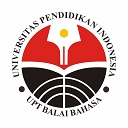MANUSCRIPT GUIDELINES
Manuscript should be prepared according to the following guidelines:
Author Guidelines:
http://ejournal.upi.edu/index.php/japanedu/download/author_guidelines_japanedu.pdf
Article Template:
http://ejournal.upi.edu/index.php/japanedu/download/manuscript_template_japanedu.doc
GENERAL AUTHOR GUIDELINES
Paper Title
The title should be accurate, unambiguous, specific, and complete. Do not contain infrequently-used abbreviations.
The title of the paper should be in 15 pt bold Calisto MT and be centered. The title should have 0 pts space above and 12 pts below.
Author Name(s) and Affiliation(s)
Write Author(s) names without title and professional positions such as Prof, Dr, Production Manager, etc. Do not abbreviate your last/family name. Always give your First and Last names. Write clear affiliation of all Author(s). Affiliation includes:name of department/unit,(faculty),name of university, address, country. Please indicate Corresponding Author (include email address) by adding asterisk (*) in superscript behind the name.
Author names should be in 11 pt Calisto MT with 24 pts above and 0 pts below. Author addresses are superscripted by numerals and centered over both columns of manuscripts. Author affiliations should be in 9 pt Calisto MT italic. The body of the text should commence 2 lines (24 points) below the last address.
Abstract and Keywords
Abstract should stand alone, means that no citation in abstract. Abstract should tell the prospective reader what you did and highlight the key findings. Avoid using technical jargon and uncommon abbreviations. You must be accurate, brief, clear and specific. Use words which reflect the precise meaning, Abstract should be precise and honest. Please follow word limitations (100‐300 words). Abstracts is written in English.
Keywords are the labels of your manuscript and critical to correct indexing and searching. Therefore the keywords should represent the content and highlight of your article. Use only those abbreviations that are firmly established in the field. e.g. SLA. Each words/phrase in keyword should be separated by a semicolon (;), not a comma (,).
Introduction
In Introduction, Author(s) should state the objectives of the work at the end of introduction section. Before the objective, Author(s) should provide an adequate background, and very short literature survey in order to record the existing solutions/method, to show which is the best of previous researches, to show the main limitation of the previous researches, to show what do you hope to achieve (to solve the limitation), and to show the scientific merit or novelties of the paper. Avoid a detailed literature survey or a summary of the findings.
Methods
Materials and methods should make readers be able to reproduce the experiment. Provide sufficient detail to allow the work to be reproduced. Methods already published should be indicated by a reference: only relevant modifications should be described. Do not repeat the details of established methods.
Findings and Discussion
Findings should be clear and concise. Please highlight differences between your results or findings and the previous publications by other researchers. Findings and Discussion is the most important section of your article. The following components should be covered in discussion: How do your findings relate to the original question or objectives outlined in the Introduction section (what)? Do you provide interpretation scientifically for each of your results or findings presented (why)? Are your findings consistent with what other investigators have reported (what else)? Or are there any differences?
Conclusions
Conclusions should answer the objectives of research. Tells how your work advances the field from the present state of knowledge. Do not repeat the Abstract, or just list experimental results. Provide a clear scientific justification for your work, and indicate possible applications and extensions. You should also suggest future experiments and/or point out those that are underway.
Acknowledgement
Recognize those who helped in the research, especially funding supporter of your research. Include individuals who have assisted you in your study: Advisors, Financial supporters, or may other supporter i.e. Proofreaders, Typists, and Suppliers who may have given materials.
References
- The citations and bibliography must comply with APA (American Psychological Association) standards 6th edition. For more information, see the following guide: (in English) http://libguides.library.usyd.edu.au/c.php?g=508212&p=3476096
- The sources cited in the article must be at least 10 sources.
- These sources are at least 80% of publications over the past 10 years.
- The cited sources are primary sources in forms of journal articles, books, research reports, thesis, and dissertations.
- It is strongly recommended to use a bibliography software in order to have the correct format of quotation and bibliography according to the APA 6th edition standards, for example the Mendeley software, or EndNote.


 Published by:
Published by:  Online ISSN:
Online ISSN: